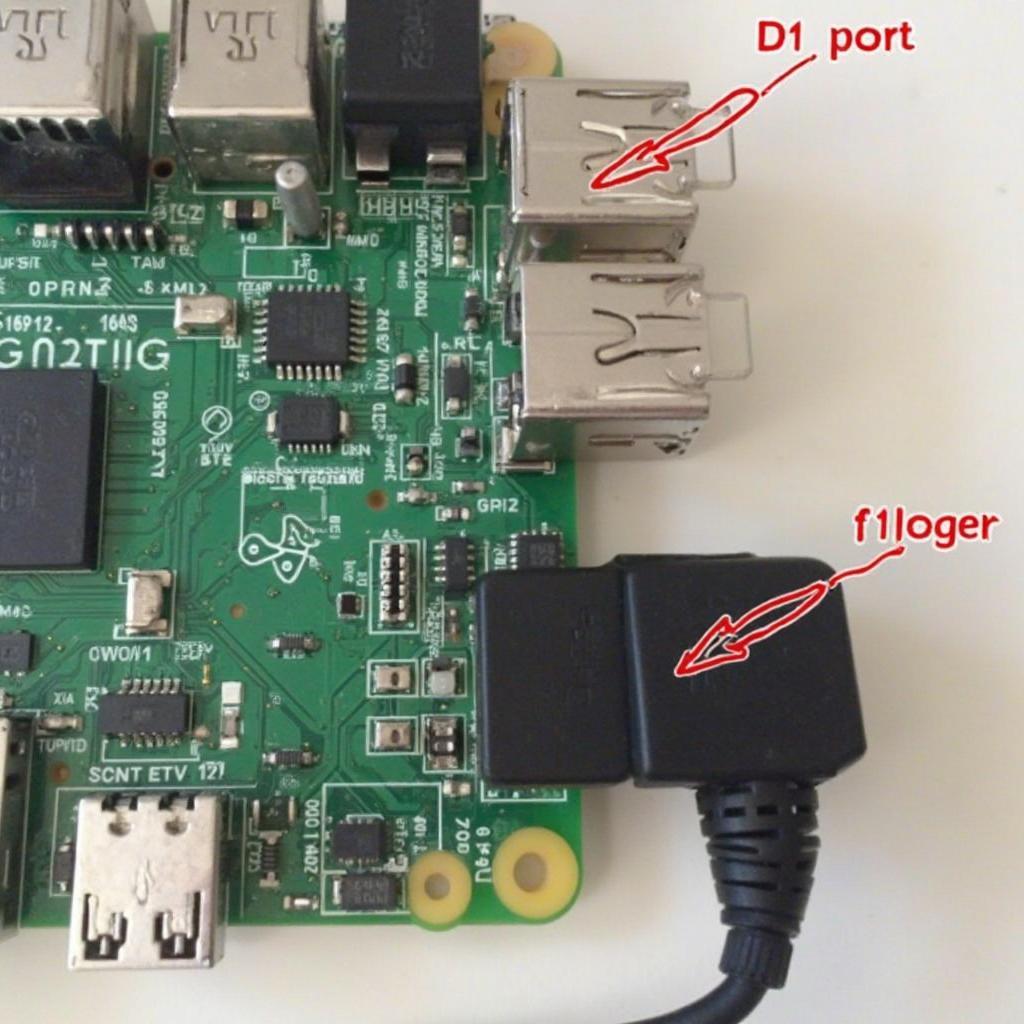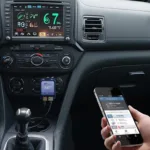Connecting your Raspberry Pi to your car’s OBD2 port opens up a world of possibilities, from creating custom dashboards to monitoring vehicle performance. This guide will explore the exciting world of raspberry pi dash obd2, providing a step-by-step approach to building your own personalized car data display.
Understanding the Basics of Raspberry Pi Dash OBD2
Before diving into the build, it’s crucial to understand the core components. A Raspberry Pi, a small single-board computer, serves as the brains of the operation. The OBD2 (On-Board Diagnostics) port, present in most modern vehicles, provides access to a wealth of vehicle data. An obd2 uart adapter bridges the communication gap between the Pi and the OBD2 port. Finally, software running on the Pi processes the data and displays it on a screen, forming your custom dashboard.
What makes the raspberry pi dash obd2 so compelling? Customization is key. You decide what data to display, from engine speed to fuel consumption, and how to present it. This level of control is unparalleled compared to standard car dashboards.
Choosing the Right Hardware and Software
Selecting appropriate hardware and software is essential for a successful raspberry pi dash obd2 project. For the Raspberry Pi, a model 3 or newer is recommended for its processing power. An elm327 usb obd2 adapter is a popular choice for reliable OBD2 communication. Consider a touchscreen display for convenient interaction. Software options include Python libraries like obd and GUI frameworks like Qt.
Choosing the right components depends on your specific needs and budget. For a basic setup, a less powerful Raspberry Pi and a simple OBD2 adapter might suffice. However, if you envision a more complex dashboard with advanced features, a higher-end Pi and a more robust adapter are recommended.
Step-by-Step Guide to Building Your Raspberry Pi OBD2 Dash
- Gather your components: Raspberry Pi, OBD2 adapter, display, power supply, and necessary cables.
- Install the operating system: Install a Raspberry Pi OS on an SD card and boot your Pi.
- Connect the OBD2 adapter: Plug the adapter into the Pi’s USB port and the car’s OBD2 port.
- Install necessary software: Install Python, the
obdlibrary, and your chosen GUI framework. - Write the code: Write Python code to read data from the OBD2 port and display it on the screen.
- Test and refine: Test your dashboard in your car and refine the code as needed.
Building a raspberry pi dash obd2 is a hands-on learning experience. Don’t be afraid to experiment with different code and configurations to achieve the desired functionality. A raspberry pi obd2 reader can be a valuable resource for gathering information from your vehicle.
Advanced Features and Customization
Once you’ve mastered the basics, explore advanced features like GPS integration, data logging, and custom gauges. You can create a truly personalized dashboard tailored to your specific needs and preferences. Imagine displaying real-time maps, recording your driving data for later analysis, or designing unique gauges that reflect your personal style. The possibilities are endless with a raspberry pi dash obd2.
“A well-built Raspberry Pi OBD2 dash can provide invaluable insights into your car’s performance,” says automotive electronics expert, Dr. Eleanor Vance. “It’s a powerful tool for both car enthusiasts and everyday drivers.”
Conclusion
Building a raspberry pi dash obd2 offers a unique blend of learning, customization, and practical application. It empowers you to take control of your car data and create a personalized driving experience. With a bit of effort and creativity, you can transform your standard dashboard into a powerful information hub. An obd2 pi setup can provide a personalized driving experience.
FAQ
- What is an OBD2 port?
- Can I use any Raspberry Pi model?
- What software do I need?
- Is it difficult to build a Raspberry Pi OBD2 dash?
- What are the benefits of a custom dashboard?
- Where can I find more information about OBD2 codes?
- How can I troubleshoot connection issues?
For further assistance, contact us via WhatsApp: +1(641)206-8880, Email: [email protected] or visit us at 789 Elm Street, San Francisco, CA 94102, USA. We have a 24/7 customer support team ready to help.


